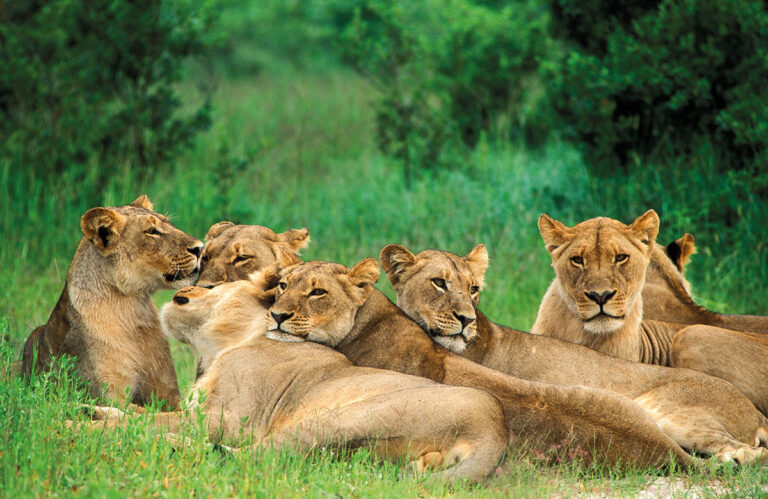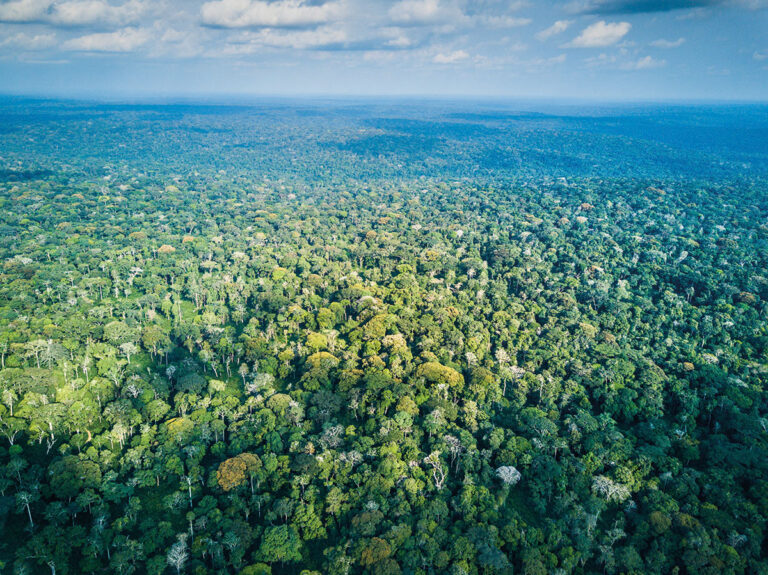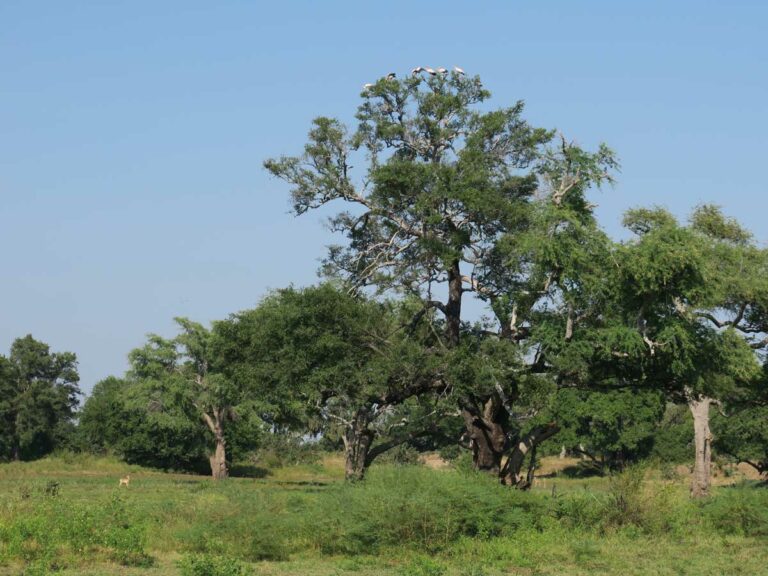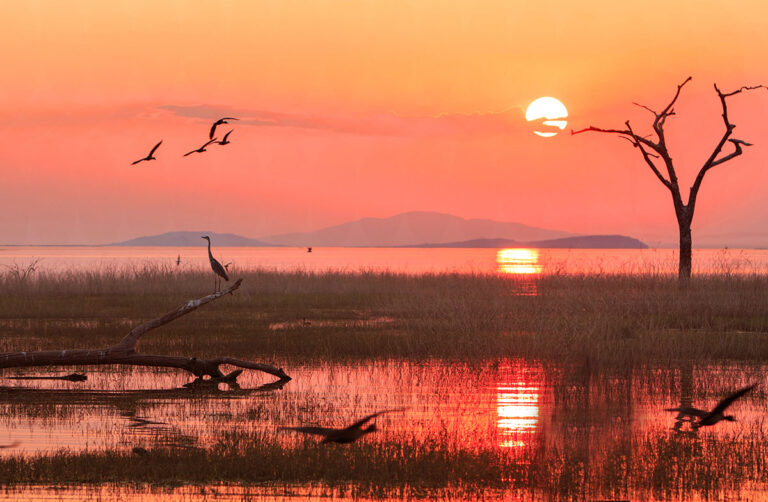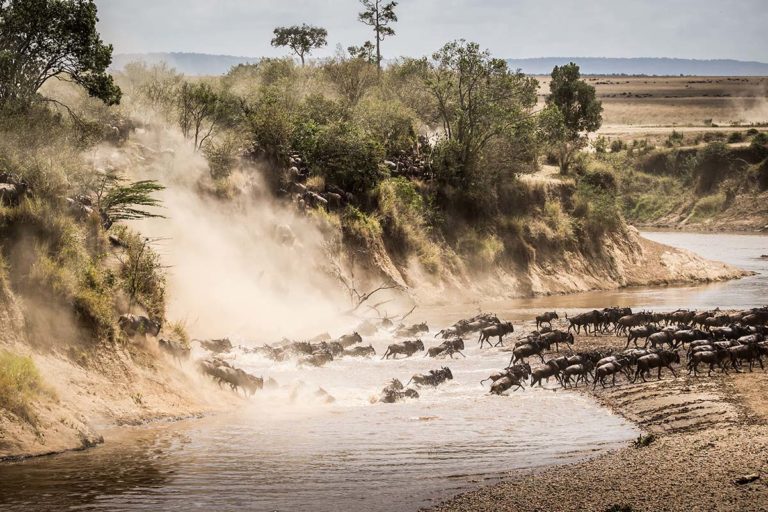Stepping into the light

Few visitors to Kenya have more experience in the Masai Mara than the writer Brian Jackman. As his first book on the reserve, The Marsh Lions, written with Jonathan Scott, is about to be re-released on the 30th anniversary of the original, we thought it was a good time for him to write an extensive two-part feature on the Masai Mara of today, tomorrow and yesterday.
(This story was originally published in Issue 58 of Travel Africa magazine, in the spring of 2012) Image copyright Piotr Gatlik, Shutterstock
Out in the acacia woodlands of Naboisho the old order is changing. Here, on the edge of the Masai Mara, the Enesikiria lion pride is about to trigger one of those regular and bloody revolutions that reverberate through lion society. Between them its three territorial pride males – Saitoti, his brother Sadala and the veteran Saruni – have produced six feisty sons, all of whom are all fast approaching the time when they will be ejected from the pride. And when that happens, provided this fearsome band of brothers stay together, they will become an unstoppable coalition, able to terrorise all the neighbouring prides for miles around.
Naboisho is one of a handful of private wildlife conservancies that have sprung up on the adjoining Masai rangelands in recent years. Initiated by the Maasai themselves, it came into being as a result of the dramatic changes that have rocked the Mara since my first visit three decades ago, and is a partnership forged between 500 landowners and a handful of eco-tourism investors. Today, with a core area of over 200 square kilometres, it is helping to preserve a crucial part of the wildlife corridors upon which the Mara-Serengeti ecosystem and its world famous wildebeest migration depend.
Traditionally the Maasai have always lived in relative harmony with wildlife. In many ways they have been as much a part of the ecology of the Mara as the wild herbivores themselves, and since they did not cultivate the plains they felt no hostility to the game that shares their rangelands.
Today the winds of climate change threaten to blow away the Maasai’s pastoral lifestyle, and the entire Mara ecosystem is itself at risk due to encroaching human activities. Since privatisation of the land, large areas have been fenced off for commercial cultivation. While many Maasai still cling to their old ways, others are moving out of their dung-plastered huts into tin-roofed houses and enthusiastically embracing first-world technology. Nowadays it is no longer surprising to see a red-robed moran with a spear in one hand and a mobile phone in the other.
The changes in local land tenure have severely restricted the mobility of wildlife in the so-called dispersal zone outside the reserve, where wildlife moves in the dry season, and the Mara is estimated to have lost well over half of most species in the past 25 years. Some animal populations have suffered catastrophic collapses, with buffalo numbers down by 75 per cent, warthogs by 80 per cent and giraffe losses as high as 95 per cent. Most disturbing of all, lion numbers inside the national reserve have fallen by almost a third in the past 20 years, reflecting a trend that is taking place right across Africa; and these figures could have been a lot worse without the presence of the adjoining Serengeti lion population.
At the same time, the Mara is under growing pressure as new safari camps spring up year after year, adding to the tourist vehicles criss-crossing the plains. Today there are at least 25 permanent camps and lodges inside the reserve, compared to a mere handful three decades ago.
In those days the reserve was still relatively unknown, its existence eclipsed by the fame of the adjoining Serengeti. But all that changed when Kenya and Tanzania fell out and closed the border in 1977. Until then, Nairobi had been the main tourist gateway for both countries. Now, denied direct access to the Serengeti, visitors headed for the Mara in ever increasing numbers.
What they found was an earthly paradise that has been described as the greatest slice of wildlife real estate in Africa – 1672 square kilometres of riparian woodland and rolling savannah, bounded in the west by the Siria Escarpment, and mapped by innumerable luggas (seasonal watercourses) whose dense thickets provide shade and shelter for the Mara’s famous lion prides.
And as if that was not enough, every year, some time in July, the Serengeti zebras would appear, together with migrating wildebeest in numbers beyond counting, to create an unrivalled spectacle as they spread out through this, their dry season refuge until the onset of the short rains towards the end of October.
From Musiara Gate all the way down to the Serengeti border, only the ruts of old tyre tracks or the hum of a light aircraft heading for Governors Camp airstrip indicated that the 20th century had ever come this far.
Even in the early 1980s it was still possible to witness the migration storming across the Mara River below the Serena Lodge with scarcely another vehicle in sight.
But in the boom years that followed the 1985 box-office success of Out of Africa, the Mara began to creak at the seams as its popularity grew.
Those like me who knew the Mara in its age of innocence find it deeply dispiriting to see how the world is closing in, and nowhere is this truer than at Mara Rianta, where you cross the Mara River in order to enter the Mara Triangle. Here on the very edge of the reserve a shantytown has sprung up where Jonathan Scott and I used to search for leopards 30 years ago.
Luckily, things are different on the other side of the river. This is where the 110 square miles of the Mara Triangle became Kenya’s first privately run game reserve when the Mara Conservancy, a not-for-profits consortium took over from the local county council. Overnight, after years of neglect, roads were repaired, poachers cleared out and years of corruption consigned to history.
However, it is important to remember that the reserve itself makes up no more than a third of the Mara ecosystem. The rest of it – the area at greatest risk – lies in the dispersal zone.
Here, changing land use combined with a succession of severe droughts was threatening to sweep away the pastoralist lifestyle for ever, and at one time it seemed as if the greater Mara might be also lost forever, its black cotton soils ploughed up, fenced off and sub-divided to oblivion. Then a miracle happened.
In 2004 Jake Grieves-Cook, a far-sighted safari tour operator with a passion for conservation, persuaded 70 Maasai families to set aside 3200ha of their land exclusively for wildlife. This was the Ol Kinyei Conservancy – the first community-owned sanctuary to be established on the rangelands adjoining the national reserve – and demonstrated how Maasai landowners could earn a decent income from sustainable tourism by pooling their resources.
The idea caught on fast, and other, bigger wildlife conservancies followed in quick succession, including Olare Orok, Naboisho and Mara North, whose 20,000ha include Leopard Gorge, the scene of numerous encounters in the Big Cat Diary.
The results have been hugely encouraging, with tourist numbers strictly controlled and wildlife – including lions – on the increase again. In fact Naboisho’s lion population currently stands at 70 – one of the highest densities anywhere – and the Mara-Naboisho Lion Project is working hard to reduce the numbers of lions being killed in retaliation for livestock losses on the surrounding rangelands.
Equally encouraging are the numbers of safari guides now being recruited from the local Maasai population. Today, Kenya’s best known guide is a Jackson ole Looseyia – whose friend and mentor Ron Beaton was responsible for setting up the Koiyaki Guiding School seven years ago in the Olare Orok Conservancy. Koiyaki is Kenya’s only community guiding school and has been responsible for producing most of the professional guides employed at Rekero, Kicheche and other top-notch camps in the greater Mara.
Looking back over the years we have known the Marsh Lions it is also impossible to ignore the physical changes that have overtaken their wild kingdom. Aerial photographs, and the personal observations of old-time game wardens and safari guides, bear witness to the manner in which the very fabric of the reserve has undergone a major transformation from bush to grassland.
Bush fires, elephants and the trampling of seedlings by the migrating wildebeest herds have all have played their part in causing the woodlands to shrink. In earlier times the Maasai shunned the Mara because its thorny acacia thickets were a haven for the tsetse flies that brought disease to their precious cattle.
But years of regular burning have helped to open up the bush, displacing the flies and encouraging more grass to grow. Even tour vehicles have played a part by breaking down the croton thickets in their constant search for lions.
At the same time, following the ivory trade ban in 1989, elephant numbers multiplied, knocking down yet more trees as a consequence, and systematically stripping out any seedlings they found on the savannah.
These changes have also affected the territories of the Mara’s lion prides, for which the importance of suitable habitat is crucial.
This is borne out by data collected by Dr Craig Packer, an American scientist at the Serengeti Research Project in Tanzania, whose studies suggest that competition for prime territory is the main reason why lions live in prides. In lion society, it seems, ownership of the choicest habitat means far more than hunting in groups or protecting the cubs.
That is why a pride’s territory is passed from one generation of lionesses to the next and why they will literally fight tooth and claw to hang on to it – a task way beyond the power of a single lioness who will always struggle to raise cubs on her own without the support of pride companions and a permanent place of refuge.
Packer’s research also revealed how river confluences and seasonal water sources are particularly sought-after, which explains why the Marsh Lions have always clung so fiercely to Musiara Marsh and Bila Shaka Lugga. These vital landscape features provide everything they need: not only plentiful shade and water but also perfect ambush sites and safe nursery thickets in which to hide their cubs.
How sad that just when we are beginning to understand lions more fully they are in big trouble. Lions, squeezed for space by a soaring human population, condemned as stock-raiders and shot by trophy hunters, are on the decline.
In the entire continent there may be no more than 25,000 left, of which nearly half are found in just six locations – four in Tanzania and one each in Kruger National Park and the Okavango Delta.
The general consensus is that human development and conflict with pastoralists are the main causes for the lion’s decline, but in some places a dramatic reduction in the amount of prey is also playing its part.
Strangely, the Serengeti is enjoying an all-time high, with around 3000 lions in the park, but across the border in the Mara it is a very different story.
Here, numbers have nose-dived by 30 per cent since 1992 to less than 200 adults.
Drivers and guides have also noted smaller numbers of adult females in prides – particularly among prides on the edge of the reserve. And there are certainly fewer young nomadic males wandering through the area because of constant pressure from outside. Incursions deep into the reserve by large herds of Maasai cattle have become the norm. They happen mainly at night when tourists are tucked up safely in their beds, but the eerie twinkling of the herders’ torches can be seen for miles and the tinkling of cattle bells echoes all too often across the plains.
In the old days the pastoralists’ traditional way of dealing with lions was the spear. Today their weapon of choice is poison, which is far more effective.
In Kenya the substance most commonly used is carbofuran, a neurotoxin manufactured to protect crops. It is designed to kill insect pests but deadly enough to finish off a lion. It has no smell or taste, making it impossible to detect when sprinkled on a livestock carcass, and will not only kill lions but any other animal that eats it, including hyenas, leopards and jackals.
In the Mara the use of poison has also had a devastating effect on vultures and other scavenging birds such as tawny eagles and bateleurs, all of whom have suffered catastrophic local declines, as have the long-crested eagles and augur buzzards that used to appear during the rainy season.
Although carbofuran was withdrawn from all Kenyan stores in 2009 it is still finding its way into the wrong hands and remains one of the most serious threats facing East Africa’s wildlife today.
Yet, for all its problems, the Mara is still Kenya’s finest wildlife showcase. It is Hemingway’s Green Hills of Africa hoisted 5000ft into the sky together with its woodland glades and immense sweeps of chest-high oat grass, its endless herds of wandering animals and nights that echo to the rumble of lions.
There are also plenty of reasons to be cheerful. Leopards, so elusive when the fur trade was active, now pose in broad daylight along the Talek River. Elephants are more plentiful than ever, and even the black rhino has returned from the dead.
For me it will always be a special place because this is where my lifelong love affair with Africa was born, on the plains where I saw and heard my first lion. Not close enough to feel the air vibrating as I would in years to come, but loud enough for me to be hooked for life.
That is why I will always think of the Mara as the land of the lion, the majestic carnivore that symbolises all that is best about wild Africa. Scar, Brando and Mkubwa – the three males that ruled the Marsh Lions when Jonathan and I first knew the pride – are long past. But their offspring have maintained the Musiara dynasty, as viewers of Big Cat Diary will have seen, keeping watch from the same termite mounds over their kingdom of grass and reed beds.
As to the future, the success of private wildlife conservancies such as Naboisho has helped to preserve a crucial part of the dispersal zone. Talk of a Mara-Serengeti trans-frontier national park remains a pipe dream, and the Mara national reserve itself stumbles on from year to year without its long-awaited management plan.
Yet miraculously, despite three decades of change, there is still no better place to observe Africa’s big cats, and the Marsh Lions continue to occupy centre stage in what is still one of the world’s most treasured wild places.
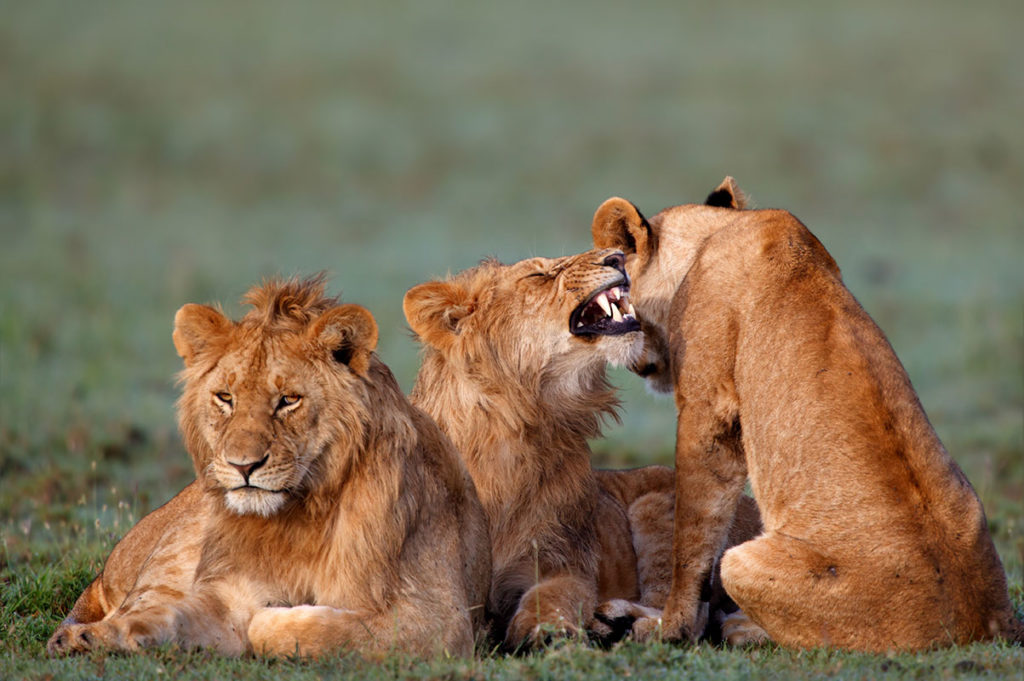
Pushing the boundaries – the Mara Conservancies
Ol Kinyei
The first private conservancy to be set up in the Greater Mara and still one of the best. It has recently been expanded to 6700ha and is a beautiful area of yellow-barked acacia woodlands, open plains and seasonal streams. You’ll find plentiful game here with large groups of elephant often seen and the Loita wildebeest migration passing through between June and November. There is a resident pride of over 20 lions as well as leopards, cheetahs and good numbers of giraffe. Wild dogs and aardwolves have also been sighted. Better still, the only camp here is Mara Porini, with six tents by the banks of Laetoli Spring, so you can have all Ol Kinyei’s big cats to yourself.
Motorogi
Motorogi (a Maasai word meaning ‘Egyptian goose’) consists of 5000ha adjoining Olare Orok and the two conservancies are managed as one unit of 13,000ha, all of which are set aside for the exclusive use of a handful of safari companies including Gamewatchers (Porini Lion Camp), Great Plains (Mara Plains Camp), Kicheche (Kicheche Bush Camp) and Virgin, who plan on opening two camps in the near future. Both conservancies operate a strict limit on vehicle numbers and tourist camps, with a maximum of one tent per 285ha and no more than 12 tents per camp.
Mara North
Covering an area of more than 32,000ha on the border of the reserve, Mara North is the biggest and most beautiful of all the private conservancies in the wildlife dispersal zone, and includes Leopard Gorge (of Big Cat Diary fame) as well as a glorious stretch of the Mara River. The open plains between the Mara and Olare Orok Rivers are as lovely as you will see anywhere. The only downside is that, in some ways, the Conservancy is still a work in progress. Unlike Ol Kinyei and Olare Orok, the local Maasai and their livestock have not completely moved out – diminishing the sense of pristine wilderness – and it has proved difficult to prevent additional safari camps springing up. However its ten member camps include some of Africa’s finest. Among them are Elephant Pepper Camp, Saruni Mara, Kicheche’s Acacia Valley Camp, Serian Camp, Royal Mara Safari Lodge and Offbeat Mara Camp.
Naboisho
Built on a sustainable partnership between Maasai landowners, eco-tourism investors and conservation interests, The Mara Naboisho Conservancy is a model of community involvement in Kenya’s safari industry. With a core area of more than 200 square kilometres bordering the national reserve, its presence is crucial to the survival of the wildlife dispersal zone, and the density of game to be seen here is among the highest in Africa. Naboisho’s lions are doing well and are monitored by the Mara-Naboisho Lion Project (www.mnlp.org ). Like Motorogi, Olare Orok and Mara North, it is part of the Koiyaki Lemek Group Ranch and is home to the hugely successful Koiyaki Guide School, many of whose former pupils are employed as professional safari guides throughout the Mara. Game viewing is restricted to seven upmarket bush camps: Rekero Naboisho, Encounter Mara, Basecamp Wilderness, Basecamp Dorobo (a mobile flycamp used for walking safaris), Kicheche Valley, Ol Seki and Porini Mara (in the adjoining Ol Kinyei Conservancy).
Why choose a conservancy safari?
The benefits of staying in the conservancies are considerable. Not only do they offer low-impact tourism with eco-friendly camps and fewer vehicles, but also night drives, game walks with armed guides, and bush breakfasts, dinners and sundowners in carefully selected spots – activities not allowed inside the national reserve. The only thing missing is the spectacle of the major wildebeest river crossings, but you can still visit the reserve whenever you wish – provided you pay the entry fee.
Olare Orok
With 8000ha of pristine savannah in the heart of the wildlife dispersal zone, Olare Orok is among the most successful of all the Mara conservancies and is probably the best place in the world to watch lions. When Olare Orok was established in 2006 the cats were in deep trouble. Today its prides are flourishing again, with at least 50 lions roaming the conservancy. There are three great camps here: Kicheche Bush Camp (6 tents), the luxuriously appointed Mara Plains (7 tents), and Porini Lion Camp (10 tents) on the Ntiakitiak River. As at Motorogi and Ol Kinyei, vehicles and visitor numbers are restricted to ensure a more private and personal safari experience.
Lemek
This vast expanse of open plains in the far northwest corner of the wildlife dispersal zone is part of the old-established Koiyaki Lemek Group Ranch. Lemek’s big game country is best explored by basing yourself at the stylish Saruni Mara safari lodge, whose six luxury cottages – hidden in an idyllic valley of camphor wood and wild olives – sit just outside Lemek’s southern boundary in Mara North (they have an access agreement with Lemek). Don’t miss a drive into the surrounding hills, ending up with sundowners and stupendous views from the summit of Kililiwoni.
Enonkishu
This community-owned private initiative consists of 9700ha of bush country in the northwest corner of the wildlife dispersal zone near the Lemek Hills. Aims to improve the life of its Maasai landowners through better education, cattle husbandry and conservation awareness as well as providing greater security and preventing poaching and charcoal burning. A women’s development group is successfully producing income from a honey business with over 1200 hives. There is only one safari lodge at present, the eco-friendly Mara Nubian.
Ol Chorro
Ol Chorro is a private 6900ha wilderness bordering the Mara River between the Enonkishu and Lemek conservancies. The owners – four major families and 96 individuals – obtain their income from entry fees that are divided among all landowners on a per acre basis. Accommodation boils down to a choice between the Mara Safari Club’s 50 tents beside the Mara River, or Acacia House, a private bush home overlooking the Ol Chorro waterhole in the Lemek Hills.
Plan your trip
Getting there Kenya Airways (www.kenya-airways.com), British Airways (www.ba.com) and Virgin Atlantic (www.virgin-atlantic.com) all have regular direct flights from London to Nairobi. Safarilink (www.flysafarilink.com) provide internal flights between Nairobi and the various camps in the Mara region.
When to visit The Masai Mara and its accompanying conservancies offer rewarding wildlife viewing year round. If you’d like to witness the annual wildebeest migration you should travel between August and October, though in dry years the masses can arrive as early as late June.
Books Lonely Planet and Rough Guides both produce reliable guidebooks to Kenya for independent travellers. Bradt’s Kenya Highlights (1st ed, 2010) by Philip Briggs is great for those on organised safaris to the Mara or elsewhere in the country.
The Mara Predator Project At a time when lions are disappearing all over Africa, the Mara conservancies are bucking the trend. Here, Living With Lions, a not-for-profit organisation dedicated to conserving these large carnivores, has been helping to minimise human-wildlife conflict through its Mara Predator Project. The result is a healthy and growing lion population whose fortunes you can follow by logging on to www.livingwithlions.org/mara. Visitors to the Mara North and Olare Orok conservancies are also invited to help monitor lions by photographing, identifying and reporting any lions you see.
The Marsh Lions A bestseller when first published in 1982, The Marsh Lions portrays a vivid picture of life and death on the African savannah through the story of a pride of lions in Kenya’s world-famous Masai Mara game reserve. The story is essentially a true one. All the central characters are real, and most of the incidents described actually happened. This 2012 re-released edition of the book is published by Bradt (www.bradtguides.com) and includes a new chapter bringing the story up to date with the pride as it is now, alongside photos of the new lions. The book is illustrated with photographs and drawings by Jonathan and Angela Scott.
Originally published in Travel Africa, Issue 58, Spring 2012 – facts and figures will have changed!
Brian Jackman is an award-winning travel writer. He worked on The Sunday Times for 20 years and has had work published in many top English newspapers. He is the author on four books on Africa: West with the Light, The Marsh Lions, Roaring at the Dawn and The Big Cat Diary.
Other recent articles
Rediscovering Zimbabwe
The green heart: trees of life
Where to look?
Zimbabwe highlights
Circuit breaks
25 Reasons to visit Kenya
Subscribe
Never miss an issue of Travel Africa
To ensure you get your regular Africa fix, subscribe to have each issue of Travel Africa delivered directly to you as soon as it is published (four times a year). Choose from print+digital or digital-only options, to suit your preferred reading style. Renewals and gift options are also available.
Join our Shamwari gnusletter
Sign up to receive additional content, news and travel tips by email. Your address will be used only for this purpose and you can unsubscribe at any time.
By using this form you agree that you have read our Privacy Policy

